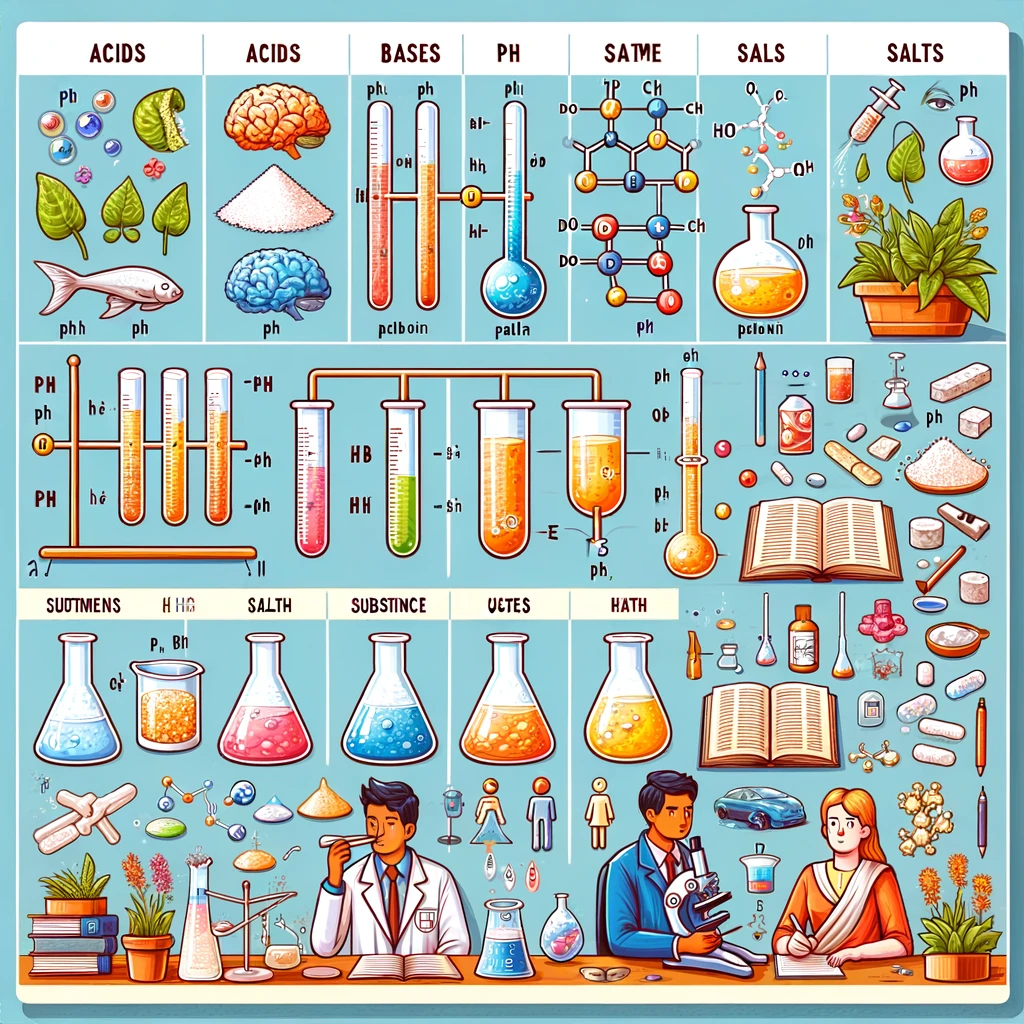
Acids, Bases, and Salts: The Core of Chemical Reactions

Introduction:
Acids, bases, and salts are fundamental concepts in chemistry, playing a vital role in various chemical reactions and processes. Understanding these substances and their properties is crucial for Class 10 students, as it lays the groundwork for more complex chemistry topics and everyday applications.
Understanding Acids, Bases, and Salts:
- Acids are substances that release hydrogen ions (H+) in a solution, characterized by their sour taste, ability to turn blue litmus red, and corrosive nature.
- Bases are substances that release hydroxide ions (OH-) in a solution, known for their bitter taste, slippery feel, and ability to turn red litmus blue.
- Salts are compounds formed from the neutralization reaction between an acid and a base, exhibiting a wide range of properties depending on their constituent ions.
Key Concepts and Reactions:
- pH Scale: A measure of acidity or alkalinity of a solution, ranging from 0 (strongly acidic) to 14 (strongly basic), with 7 being neutral.
- Neutralization: The reaction between an acid and a base to produce a salt and water, demonstrating the concept of acidity and basicity balance.
- Common Salts and Their Uses: Exploration of everyday salts like sodium chloride (table salt), and their roles in food, industry, and health.
Applications in Real Life:
The concepts of acids, bases, and salts find applications in food preparation, medicine, cleaning products, and environmental processes. Understanding these substances’ reactions and properties allows students to grasp the chemical principles governing the world around them.
Conclusion:
Grasping the basics of acids, bases, and salts equips Class 10 students with the knowledge to explore more complex chemical reactions and their applications. This foundation is not only crucial for academic success in chemistry but also enhances students’ understanding of the chemical processes in their daily lives.